Portulaca smallii (Small’s Purslane) is a rare, protected plant, endemic to the thin soils of granite flatrocks and outcrops in the Piedmont regions of Virginia, North Carolina, South Carolina (a single site) and Georgia. The Mitchell Mill State Natural Area contains the largest granitic flatrock community in North Carolina, and Portulaca smallii is present there, scattered through much of the flatrocks. At Mitchell Mill, P. smallii is found only in a restricted zone, in thin soil between the open rock and the deeper soils and background vegetation behind it. In other sites, it has been reported to colonize nearby fields and disturbed areas, but this has not been seen at Mitchell Mill.
P. smallii is a succulent summer annual, a member of the large Purslane family, the Portulacaceae. The photo below is of an aggregation of plants as they would appear to a passer by. Notice the close proximity to the exposed rock and the thinness of the soil.
Closer views of individual plants are illustrated below.
The seeds of P. smallii primarily germinate in spring and early summer, and flowering often follows closely in a month or so. The flowers are usually a pale pink, and can be so pale as to appear white at times. The flowers open for only a short period around noon, and may remain closed all day when the skies are dark with clouds. The flowers can self-pollinate, which is useful when the period for pollinators to enter the flower is so narrow. A typical flower blooming in July follows.
A wider view shows the leaf shape, which is generally lance-like in outline, and rounded and cylindrical in shape.
There is another, closely related portulaca at Mitchell Mill – Portulaca amilis (Paraguayan Purslane). This plant is common and widespread in the area, and also grows on the flatrock soils, sometimes directly beside P. smallii.
Portulaca amilis can be distinguished from Portulaca smallii by its larger, dark pink flowers, and its flatter, wider leaves that often appear like the blades of a fan.
Although the preponderance of germination takes place in spring and summer, P. smallii seeds are capable of germinating throughout the growing period. Below are photos of seedlings estimated to have germinated in late August or September. The scrolling vein patterns stand out clearly in these tiny plants.
Both portulaca species at Mitchell Mill begin to decline in October and by Thanksgiving, most plants have disappeared completely or there is only a remnant stem or dead leaves. Pictured below are several plants that have expired but are still relatively well preserved in late November. Portulaca smallii is directly below, followed by Portulaca amilis.
Portulaca smallii is a protected plant in North Carolina: Status – Threatened (T); Rank -Imperiled (S2); Global Rank – Vulnerable (G3). Although most plants are found on granite outcrops and flatrocks, they have also been reported on diabase flatrock.
Herb Amyx



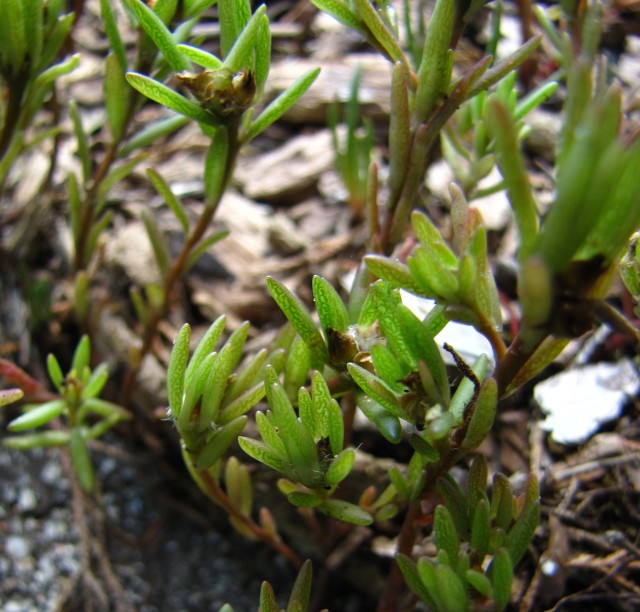
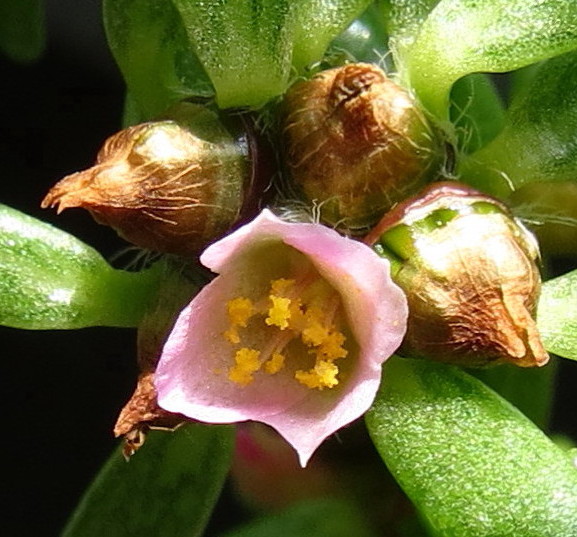
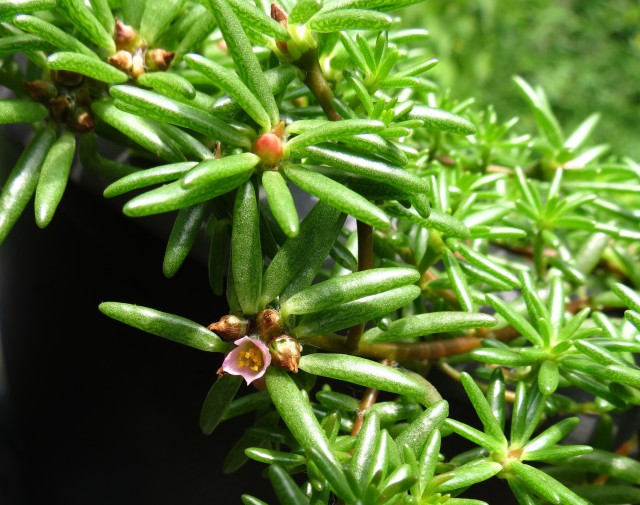
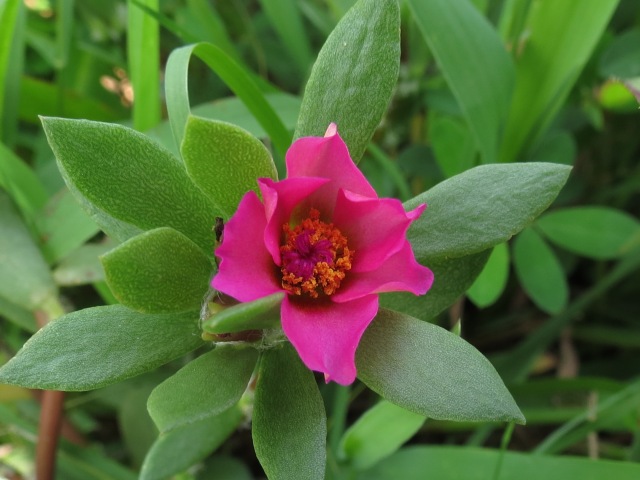
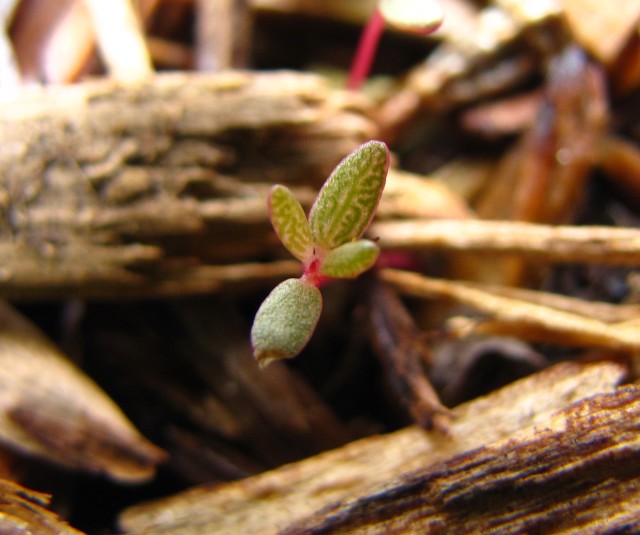
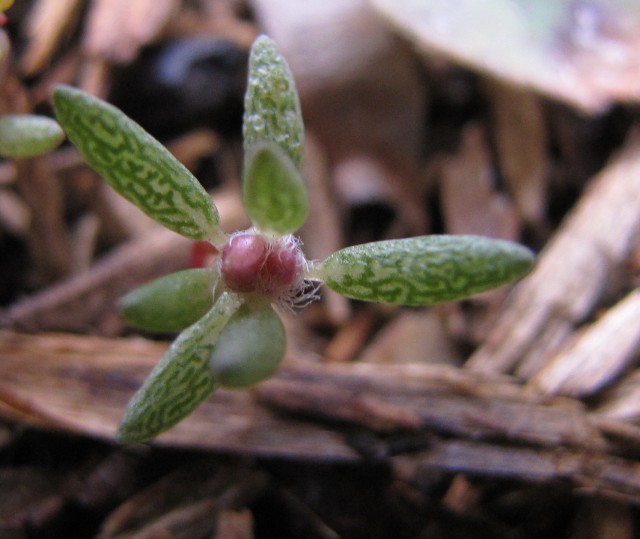
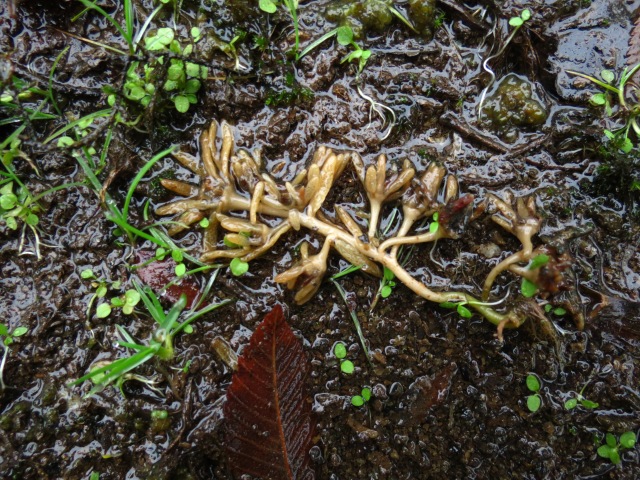

Thanks, Herb. This one is on my List of 500, but I did not see it when I visited Mitchell’s Mill a few times a few years back. I did get some nice shots of some of the other plants on my list during those visits. Portulaca smallii, Small’s purslane, Portulacaceae, forb, 200 to 600-(900) ft above sea level,blooms Jun-Oct, Threatened{granit, flatrock, diabase, glade, cedar, field, lime, legrand,soil, disturb, endemic, schafale, weakley} Wake – Mitchells Mill Granitic Flatrock 282 to 296 ft asl, 35.92, -78.39 {granit, outcrop, bare, rock}{soil, gravel, typic, accumul, sand, rains}{flatrock, natur, river, plant, rare, mill, threaten, piedmont,small, moss, spring, virgin, neuse, endemic, animal, wood, coast, plain, pine, pool, shallow, lichen, legrand,salamander, shrub} Arleigh Birchler “Wild Azalea Home”
** Sent from my Intergalactic Star Cruiser **
From: News from Rockcliff Farm To: arleigh.birchler@yahoo.com Sent: Friday, November 28, 2014 7:32 AM Subject: [New post] Portulaca smallii at the Mitchell Mill State Natural Area #yiv0078579838 a:hover {color:red;}#yiv0078579838 a {text-decoration:none;color:#0088cc;}#yiv0078579838 a.yiv0078579838primaryactionlink:link, #yiv0078579838 a.yiv0078579838primaryactionlink:visited {background-color:#2585B2;color:#fff;}#yiv0078579838 a.yiv0078579838primaryactionlink:hover, #yiv0078579838 a.yiv0078579838primaryactionlink:active {background-color:#11729E;color:#fff;}#yiv0078579838 WordPress.com | B. W. Wells Association posted: “Portulaca smallii (Small’s Purslane) is a rare, protected plant, endemic to the thin soils of granite flatrocks and outcrops in the Piedmont regions of Virginia, North Carolina, and Georgia. The Mitchell Mill State Natural Area contains the largest grani” | |
Thanks for your comments Arleigh. The best time to find Portulaca smallii at Mitchell Mill is summer. Good numbers can be found on the large flatrocks right off Route 96, and there are also plants at several locations on the Pulleytown Rd side of the flatrocks.
This purslane (dmllii) grows wild throughout my yard. Is it really rare and protected? I live in a mobile home park and the yards are mowed by management, but I have transplanted a plant to a pot and it’s fine. Will this variety grow well inside a screened porch with only morning direct sunlight? How much of the plant is edible? I am very interested in the anti-inflammatory properties
of this plant.
The purslane growing wild in your yard is very unlikely to be Portulaca smallii, which is almost entirely restricted to a granitic flat rock or outcrop habitat. The other portulaca mentioned in the article, Portulaca amilis, is a known yard weed and is easily transplanted to pots. Another possibility may be Portulaca oleracea, which has yellow flowers. Both would probably grow with only morning sun, but that would not be optimal. The edible parts of the plant are primarily the leaves, but the stems are also eaten when the purslanes are young and tender. We do not know if the claims of anti-inflammatory properties for these plants is accurate or not. Thanks for your comments.